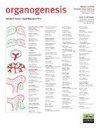丝素海绵包覆小直径聚酯血管移植物的研制
IF 2.8
4区 生物学
Q4 BIOCHEMISTRY & MOLECULAR BIOLOGY
引用次数: 11
摘要
摘要近年来,由于血管性心脏病患者数量的增加,对功能性小直径(<6mm)人工血管移植物的需求大幅增加。然而,目前还没有可用的商业小直径移植物。本研究的目的是开发直径<6mm的多孔丝素蛋白(SF)涂层聚对苯二甲酸乙二醇酯(PET)移植物。将该移植物与明胶涂层PET移植物进行比较,因为后者直径~6mm的PET移植物被广泛用作商业血管移植物。最初,使用甘氨酸作为成孔剂[称为SF(甘氨酸)]制备多孔SF,并通过双拉舍尔编织法制备PET移植物。随后,使用蛋白酶XIV在体外监测SF涂层的降解,并将其与明胶涂层的PET移植物中观察到的降解进行比较。最后,这些移植物也被植入大鼠体内进行体内比较。在降解实验中,7天后,SF被蛋白酶XIV清楚地消化,但移植物上的明胶仍然保留在外表面。在大鼠植入实验中,与明胶涂层的PET移植物相比,SF(Gly)涂层的PET移植植物在体内快速降解,并促进了自身组织的重塑。在明胶包被的PET移植物中观察到血栓形成和内膜增生;然而,在SF(甘氨酸)包被的PET移植物中没有观察到这样的副反应。因此,小直径<6mm的多孔SF(甘氨酸)涂层PET移植物可能可用作商业血管移植物。本文章由计算机程序翻译,如有差异,请以英文原文为准。
Development of Small-diameter Polyester Vascular Grafts Coated with Silk Fibroin Sponge
ABSTRACT In recent years, the demand for functional small-diameter (< 6 mm) artificial vascular grafts has greatly increased due to an increase in the number of patients with vascular heart disease. However, currently, there are no available commercial small-diameter grafts. The objective of this research was to develop a porous silk fibroin (SF)-coated poly(ethylene terephthalate) (PET) graft with a diameter < 6 mm. The graft was compared with a gelatin-coated PET graft because the latter PET graft with a diameter ~ 6 mm was widely used as a commercial vascular graft. Initially, porous SF was prepared using Glyc as the porogen [termed SF(Glyc)] and the PET grafts were prepared through the double-Raschel knitting method. Subsequently, the degradation of the SF coating was monitored using protease XIV in vitro and was compared with that observed in gelatin-coated PET grafts. Finally, these grafts were also implanted into rats for an in vivo comparison. In degradation experiments, after 7 days, the SF was clearly digested by protease XIV, but the gelatin on the graft was still remained at the outer surface. In implantation experiments in rats, the SF(Glyc)-coated PET graft was rapidly degraded in vivo and remodeling to self-tissues was promoted compared with the gelatin-coated PET graft. Thrombus formation and intimal hyperplasia were observed in the gelatin-coated PET graft; however, such side reactions were not observed in the SF(Glyc)-coated PET graft. Thus, the porous SF(Glyc)-coated PET graft with a small diameter < 6 mm may be useful as a commercial vascular graft.
求助全文
通过发布文献求助,成功后即可免费获取论文全文。
去求助
来源期刊

Organogenesis
BIOCHEMISTRY & MOLECULAR BIOLOGY-DEVELOPMENTAL BIOLOGY
CiteScore
4.10
自引率
4.30%
发文量
6
审稿时长
>12 weeks
期刊介绍:
Organogenesis is a peer-reviewed journal, available in print and online, that publishes significant advances on all aspects of organ development. The journal covers organogenesis in all multi-cellular organisms and also includes research into tissue engineering, artificial organs and organ substitutes.
The overriding criteria for publication in Organogenesis are originality, scientific merit and general interest. The audience of the journal consists primarily of researchers and advanced students of anatomy, developmental biology and tissue engineering.
The emphasis of the journal is on experimental papers (full-length and brief communications), but it will also publish reviews, hypotheses and commentaries. The Editors encourage the submission of addenda, which are essentially auto-commentaries on significant research recently published elsewhere with additional insights, new interpretations or speculations on a relevant topic. If you have interesting data or an original hypothesis about organ development or artificial organs, please send a pre-submission inquiry to the Editor-in-Chief. You will normally receive a reply within days. All manuscripts will be subjected to peer review, and accepted manuscripts will be posted to the electronic site of the journal immediately and will appear in print at the earliest opportunity thereafter.
 求助内容:
求助内容: 应助结果提醒方式:
应助结果提醒方式:


